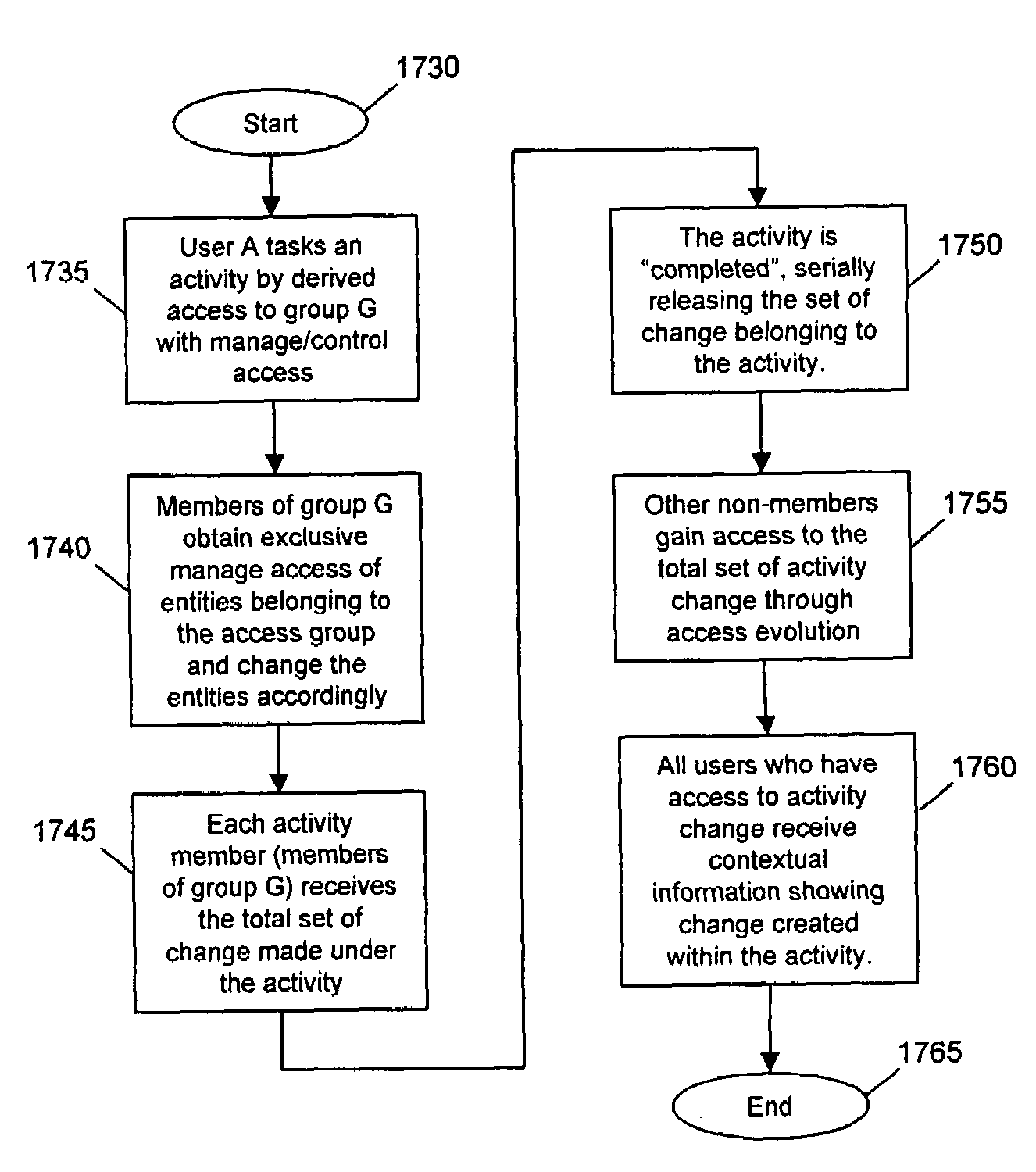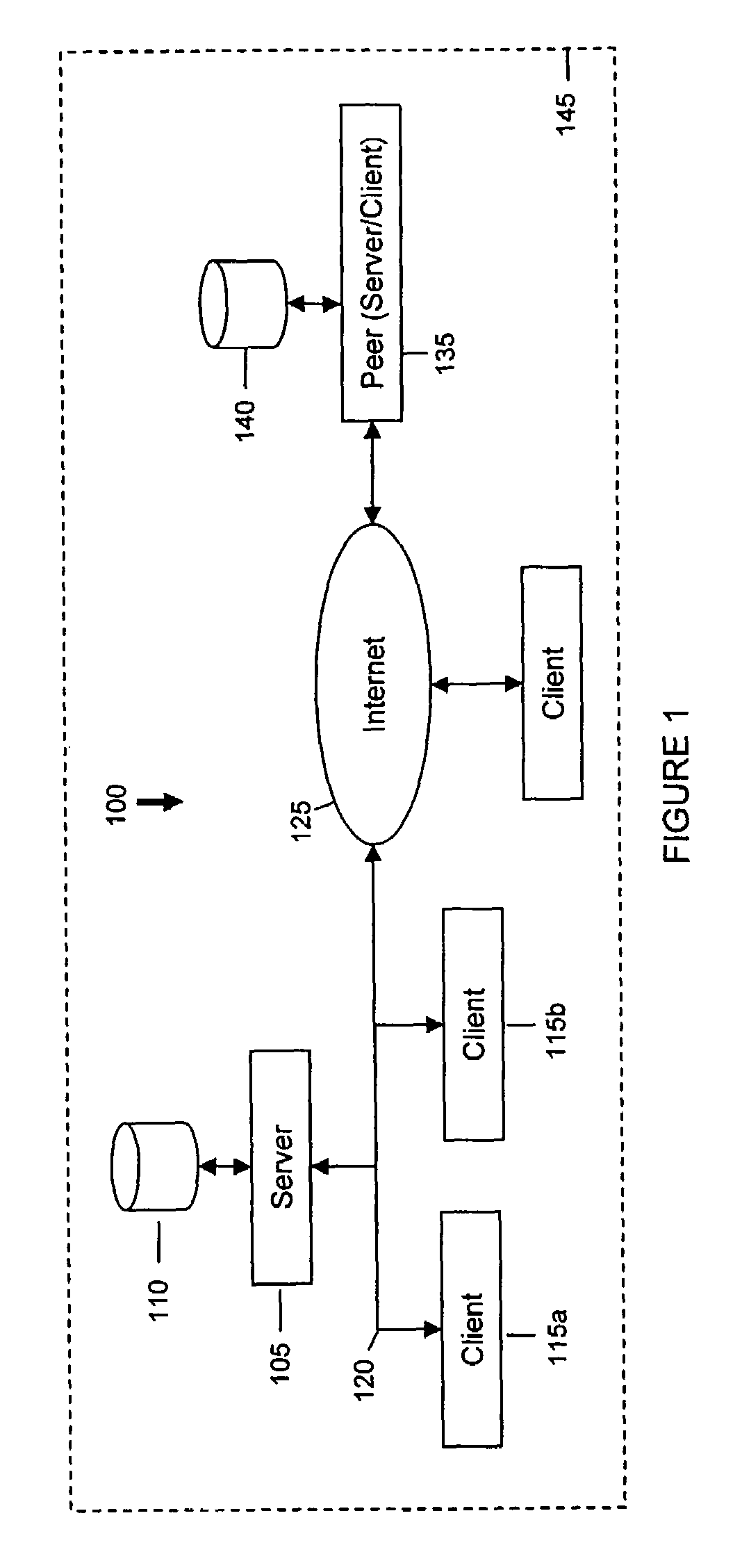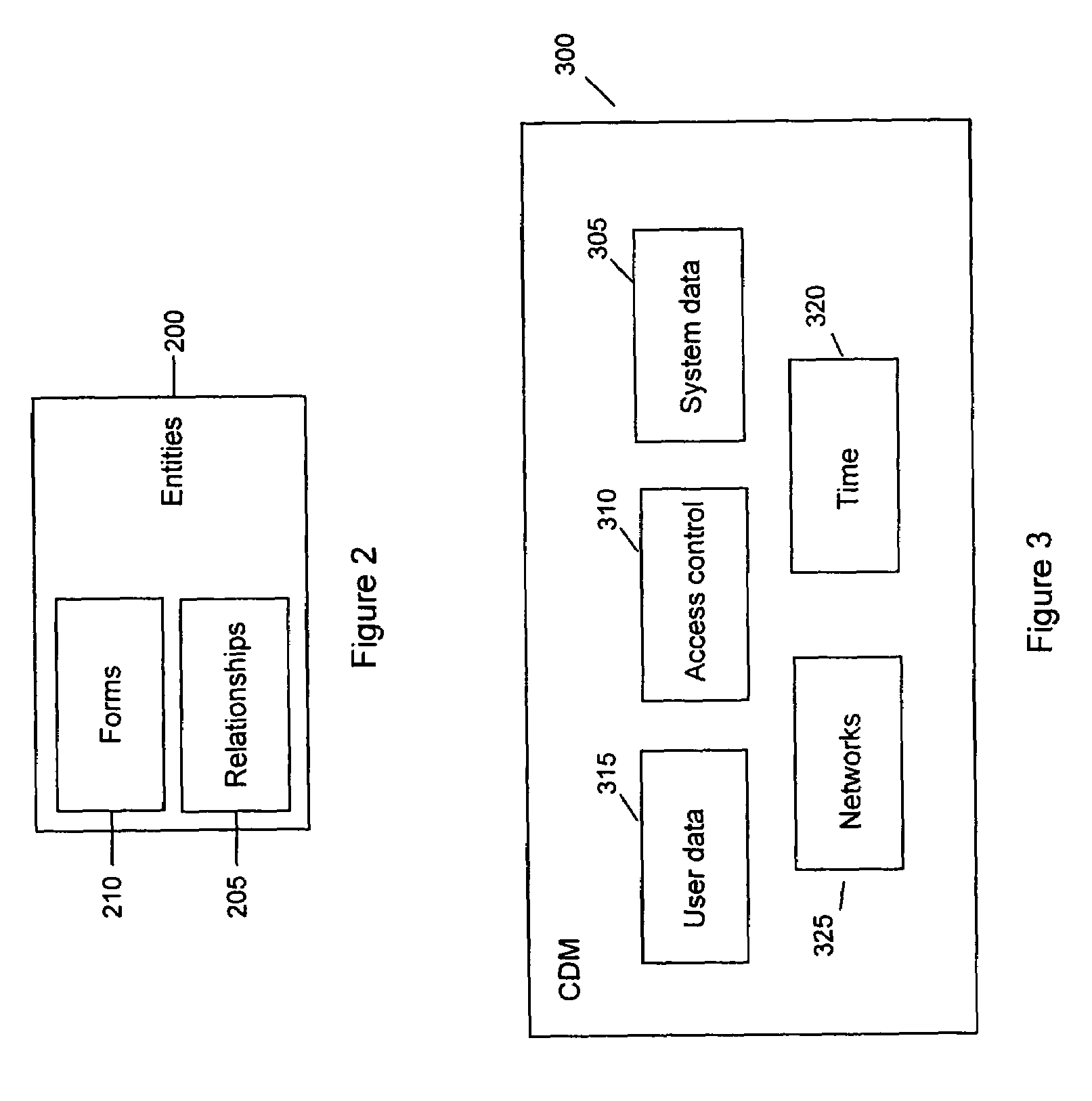Network operating system and method
a network operating system and operating system technology, applied in the field of network operating system and method, can solve the problems of unachievable composite and unified sharing arrangements, unsatisfactory use of e-mail, and inability to achieve the goal of unified and shared arrangements
- Summary
- Abstract
- Description
- Claims
- Application Information
AI Technical Summary
Benefits of technology
Problems solved by technology
Method used
Image
Examples
Embodiment Construction
Complex Data Medium
[0073]FIG. 1 is a block diagram of an embodiment of the environment of the invention, generally denoted by reference numeral 100. However, one of ordinary skill in the art would recognize that the invention may be used in other environments. The environment 100 includes a server 105 having an associated database 110 and a plurality of clients 115 (a, b, c), 130, and 135. Further, the environment includes network 120, which may be a local area network (LAN), wide-area network (WAN), or other network. The Internet 125 interconnects network 120 with the client 130 and the peer 135, which also may have a database 140.
[0074]The server 105 and associated database 110 may together persist and manage information and data. The server 105 and database 110 may exist in other variations, as one skilled in the art would recognize. The server may support different network applications (e.g., word processor, enterprise applications, data base applications, or the like). The serv...
PUM
 Login to View More
Login to View More Abstract
Description
Claims
Application Information
 Login to View More
Login to View More - R&D
- Intellectual Property
- Life Sciences
- Materials
- Tech Scout
- Unparalleled Data Quality
- Higher Quality Content
- 60% Fewer Hallucinations
Browse by: Latest US Patents, China's latest patents, Technical Efficacy Thesaurus, Application Domain, Technology Topic, Popular Technical Reports.
© 2025 PatSnap. All rights reserved.Legal|Privacy policy|Modern Slavery Act Transparency Statement|Sitemap|About US| Contact US: help@patsnap.com



